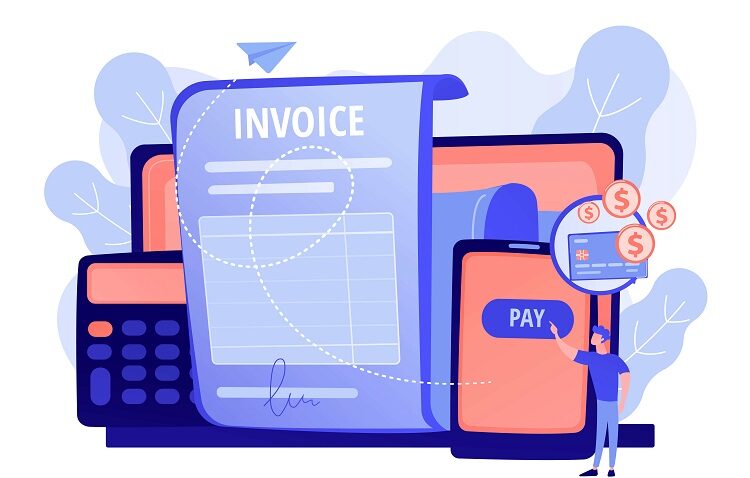Discover balancing productivity and burnout while living a digital nomad lifestyle. Get the best of both worlds and start your journey today.
Learn actionable tips on maintaining your energy levels, setting boundaries, and taking time for yourself.
Learn the strategies and tools of digital nomads to stay productive without burning out. This comprehensive guide covers everything from creating a workable schedule to setting boundaries to dealing with stress in order to sustainably work remotely.
Table of Contents
TogglePerfect Balance Doesn’t Exist
Let’s get one thing straight before we dive into the nitty gritty. Life is not a set of scales. There is no way to develop and maintain a perfect balance indefinitely.
When you’re talking about productivity, balance requires flexibility.
While you should absolutely work on creating a system that helps you maximize your productivity and avoid burnout, you should also recognize that you might need to tweak it now and then to keep going strong.
This is your comprehensive guide to balancing productivity and burnout.

What Is Productivity, Anyway?
If you want the technical definition of productivity, it’s equal to the number of outputs divided by the number of inputs over a period of time. Reading that probably didn’t help you understand productivity very much.
Productivity as a measurement is all about what you can get done with whatever resources you’re using over whatever time period. If you have the same number of inputs as someone doing the same job as you, but you’re producing fewer outputs or taking longer to produce the same number of outputs, you are said to be less productive than the other person.
On the opposite side, your productivity is higher if you produce more outputs in less time or more outputs with fewer inputs.
How to Measure Your Own Productivity

Productivity isn’t a simple thing to measure. As simple as the formula for productivity sounds, it’s not easy to fill in the blanks. To do so, you need to understand your inputs and outputs.
Don’t underestimate the complexity of labeling your ACTUAL inputs and outputs.
Hint: there are a lot of nuances involved, and it’s almost never as straightforward as you think it will be.
Defining Your Inputs
Inputs are anything you use to do your work. If you were looking at factory workers 50 years ago, inputs were very easy to distinguish. You’d look at the parts used, the tools needed, and the hours of work for employees.
In the digital economy, inputs aren’t always as obvious.
What inputs does a blogger use? How about a social media manager or a digital marketer?
A few are obvious and shared between each of these occupations:
- Time
- Internet-Connected Device(s)
- Data or Internet Access
Beyond that, each job has its own unique inputs that should be considered individually. As an example, here are a few of the more abstract inputs for each of the jobs mentioned above.
| Blogger | Social Media Manager | Digital Marketer |
| Hours of research | Relevant content | Ads budget |
| Access to industry-related sources (think magazines, research papers, news, etc.) | Daily research hours | Marketing content |
| Word processing tools | Tracking & posting tools | Performance tracking tools |
| Quality control tools | Followers, subscribers (sometimes) | SEO tools |
| Stock image access & editing | Connections/outlets |
You might be able to argue that some of these inputs could fall under a larger umbrella, but if you look closely they’re not directly related to any of the “normal” inputs we think about.
A blogger who spends more time researching versus writing isn’t necessarily less productive. A social media manager with more content to draw from doesn’t necessarily have a higher number of overall inputs.
Inputs are tricky, because they vary based on the exact job you’re doing. The simplest way to understand exactly what inputs you use for your work is to track everything you do in a typical workweek and break down what you use to complete your work over that time.
Track every little thing you do. When you process the results, list down all the things you use for your work, no matter how small. It’s useful to be aware of what inputs you use, even if you’re not going to end up tracking them all. Tracking everything that you do can be extremely tedious and overwhelming though. To make this process easier, you can use time management apps that have a time tracking feature, such as Toggl Track (which lets you track your time for free, by the way!).
Defining Your Outputs
If you thought your work inputs were subjective, wait until you take a closer look at your outputs.
Outputs are highly subjective depending on what your goals are. Unless you’re making a specific product and selling it to customers, your outputs are going to vary between clients and between individual projects.
To get the hang of measuring your outputs, you need to create a few broad categories that will cover most of your goals for different types of work or clients.
For the sake of continuity, let’s look at the same three jobs as before: bloggers, social media managers, and digital marketers. Taking these three jobs, here are some of the potential outputs these jobs can produce.
| Blogger | Social Media Manager | Digital Marketer |
| Pieces of content written | The number of posts, videos, etc. | Ads |
| Number of words written | Total account activity | Guest blog posts |
| Published work | Images, videos & other media | Awareness campaigns |
| Effective content (creating conversions, selling, etc.) | Links & conversion-focused content | Online presence |
Each of these outputs could be more or less valuable depending on the goals going into it. Each might also require a different number of inputs each time.
Using bloggers as an example, published work is a much higher standard than the number of words written, requiring a larger input under most circumstances. Website gatekeepers aren’t going to want to post poor-quality content.
However, some work doesn’t need as much time or quality control, such as writing product descriptions for an e-commerce shop. Quality still matters, but the work isn’t held to as high of a standard as published content and it doesn’t require nearly as much research to complete.
So, how do you figure out what your actual outputs are for your work?
Do the same thing you do for your inputs, but with another layer of information. Make sure you track your outputs in relation to your specific goals for that output.
Because you might have different projects with varied goals at any given time, you may need to track outputs for longer than you tracked your inputs to get a more complete list.
Measuring Holistically
Getting a good grasp of productivity means you can’t look at any one factor in a bubble. You have to consider every factor in relation to the other factors you’re measuring as well as broader macro circumstances.
Even with a solid list of inputs and outputs, you have to remember that external factors can impact your inputs and outputs without truly affecting your productivity. Goals are a big part of this, as I mentioned in the “outputs” section.
Besides your goals for work, you have to look at the rest of your life as well. If you’re a recent college graduate with no other commitments, you may be able to have a radically different balance of inputs than someone who’s married or has children.
Similarly, if you’re taking time to learn new skills that will eventually help you improve your work or life, it would be difficult to argue that you’re being less productive overall. It’s all relative to what is happening in your life at the time.
Work isn’t the only thing happening at any one time. If you’re a human being and not an AI (hello, future), you probably have multiple non-work things happening that might demand some of your input. That’s okay. Just make sure you account for that when you’re thinking of your total productivity at work.
You can account for these things by either including them in your measuring system or purposefully leaving out blocks of time or resources. I would recommend counting your personal, non-work time in your system so you can figure out a better way to approach your life in general.
How NOT to Measure Your Productivity

If you want to be frustrated all the time and constantly wonder why you’re not seeing the improvements you would like, the quickest way is to measure your productivity incorrectly.
We see a lot of overly simplistic ways of looking at productivity today. Some advice says you just need to add more hustle (is that one of your inputs?), grit your teeth, and force yourself to get the work done. This is unsustainable.
Unless you’re working a simple manufacturing or building job, you can’t measure your productivity without nuance. Creative work can’t be boiled down to simple inputs and outputs like time used to produce X number of words.
The danger of measuring too simplistically is that you’ll be measuring the wrong thing.
If you’re a blogger, writing more words doesn’t always mean you’ve written good, useful content. On one day, you might write 5,000 words of pure nonsense versus the 2,000 inspired words you wrote the day before.
Which day were you more productive?
Measure productivity in a way that will help you boost your useful outputs while taking into consideration the realistic inputs you can offer.
Burnout & Your Productivity
If you find yourself unable to accomplish much, no matter how much time or energy you’re spending trying to do it, you could be suffering from burnout. In fact, according to some burnout stats, burnout is more and more common among employees and entrepreneurs.
Hopefully, you’re not at that point yet. But even if you are, you can still work to fix it and prevent it from happening again.
Burnout is likely to completely erode your productivity over time, as well as chipping away at your health both physically and mentally. It’s not a good place to be.
According to the Mayo Clinic, some of the main symptoms of burnout are:
- Inability to concentrate at work
- Loss of satisfaction in your work, feelings of disillusionment
- Lack of energy, unexplainable exhaustion
- Irritability at work
- Dreading going to work/starting work
- Poor sleep (if it was previously better and now worse)
- Unexplained headaches, stomach issues, aches, or pains
- Use of a physical vice to help you feel better or feel nothing (alcohol, drugs, food, etc.)
- Loss of perspective about your work (i.e. your work feels like the only thing happening)
- Loss of excitement about the future or your goals for work
None of these things in isolation is a clear sign of burnout, but experiencing a few of them might be a good indicator. But, I’m not a doctor, so it’s better to consult your doctor instead of trying to definitively diagnose yourself on this.
The bottom line is that when you’re burnt out, you’re going to completely lose your productivity. It doesn’t matter how much time or energy you try to expend doing something, you’re not going to be at the top of your game until you fix the burnout.
The Main Causes of Burnout

So, what causes burnout in the first place? HBR contributor Elizabeth Saunders breaks it down to these six main factors:
- Chronic Overload
When the amount of work you have to do always feels like too much, it’s easy to get burnt out. Most people can handle a heavy workload for a short time but taking on an overly large workload for too long causes a buildup of stress.
If you constantly feel overloaded, you’re likely to get burnt out.
- Lack of Control
Your lack of control could be just a perception, or it could be a true lack of control. Either way, it works out the same way. This tends to show up in feelings of inability to make useful contributions or impactful decisions, inability to control factors that impact your career or development, lack of access to necessary resources, and the inability to change the circumstances of your work (such as how or when you work).
A good example of this is when you work for clients or bosses who are calling you 24/7 to discuss work, ask for updates, or otherwise. If you feel like others are controlling your time, even outside of the hours you would normally work, it can contribute to burnout.
- Mismatched Effort & Results
This is a simple one. When the results/rewards you get from your hard work consistently don’t feel like they match the amount of effort you put in, it can cause you to get burnt out over time.
- Poor Interpersonal Relationships
Surprisingly, the quality of relationships you hold with your clients, team members, or bosses can impact your feelings of burnout. Good relationships help you avoid burnout while bad relationships and lack of support can make it worse.
- Unfair Treatment
Fairness is somewhat related to the results/effort mismatch, but it also has its own nuances. If you feel like you’re not receiving fair treatment in your work, it can contribute to burnout getting worse.
- Value Alignment Issues
Last but certainly not least is a lack of alignment in values. If your values don’t align with the values of your company, your clients, your work, your team, or otherwise, it can quickly break down your will to persevere.
Values may have been aligned in the beginning, but you or those you work for/with could have changed over time and caused a mismatch that’s hurting your ability to continue with the work.
If you don’t feel like the work you’re doing matches your personal or professional values, it’s almost always going to cause burnout over time.
These are six things that cause or contribute to burnout in most people. While this isn’t an exhaustive list, the running theme is that work is controlling you rather than you controlling your work.
When your work starts to control your life, burnout is a common result.
For digital workers, it can mean that the more productivity you try to squeeze out of yourself, the more likely you’re going to get burnt out instead of better.
3 Ways of Avoiding Burnout

It’s easier to prevent burnout than to treat it.
While the common advice for people suffering from burnout is to quit their job, that’s not a realistic option for everyone. You might think of that as a last resort.
First, try to adopt habits that build a more sustainable balance between your productivity at work and your health. Sustainable balance means getting the best out of yourself without falling into a lifestyle that’s going to burn you out.
Here are three ways you can work to avoid burnout while still being as productive as possible.
1. Develop & Maintain Your Life Outside of Work
What you do outside of work is just as important as what you do when you’re on the clock. By focusing on your life generally, you can improve your health, focus, and productivity while at the same time resisting burnout.
There are so many ways to add meaning to your life outside of work and to develop habits/rituals which will improve both your physical and mental health. Here are a few suggestions:
- Creating meaningful support networks
- Taking up a hobby that will help you relax and refocus your mind
- Getting involved in activities/organizations outside of work that gives you some sense of achievement or fulfillment
- Start a simple exercise routine
- Improve your diet
How can you create a work-life balance if your entire life revolves around work? That’s not a balance, it’s a monopoly!
Even if everything you do outside of work is geared towards helping you get better at your career or is building up to achieving your goals, it can still be helpful as long as it gets your mind off your immediate work.
Exercise, diet, and relaxing hobbies all play a part in building discipline and clearing your head, which improves your focus. Hobbies help your mind relax and teach you new skills. Support networks and social connections are vital when you need assistance at any point in life.
Everything you do can be part of your master plan to improve your productivity, as long as it’s not all focused on pushing your body and mind past its limits.
2. Record & Track Progress toward Your Goals
It’s beneficial to keep a healthy perspective on the future and how your actions now will contribute to a better tomorrow.
This circles back to understanding and measuring your productivity. You can take what you know about productivity and apply it to your larger goals to see how the things you’re doing today are working towards your goals, slowly but surely.
The assumption I’m making here is that you have some long-term goals laid out for yourself already. If you don’t, you’ll need to settle that first.
Here’s a helpful guide to get you on track to set up your own personal and career goals.
By measuring your productivity and tracking what you’ve been able to accomplish, you can see how you’re progressing and how your actions are making meaningful steps in the right direction.
3. Build a Meaningful Set of Boundaries
Boundaries are everything.
Long-term or regular overextension of yourself is one of the biggest contributors to burnout. Boundaries help to prevent you from reaching that point by giving you guidelines that help you know when you’re going too far.
A few good time-related boundaries to look at initially are:
- Defined working hours & non-working hours
- Disconnection time (turning off phone, laptop, electronics)
- Set leisure time (either associated with an activity or not)
- Consistent bedtime/wake-up time
Putting boundaries around your time is just one aspect. Boundaries are also important in what responsibilities you take on and what you say “yes” to in work and life.
Make a boundary around what you are willing to do in your job. This is a vital boundary because your work roles are easily overstepped if not enforced. Clients, bosses, and teammates might all try to overstep, whether it’s malicious or not.
A phone call at 9 pm asking you to check on something. An email asking for a favor outside of your regular role. A last-minute change that you’re asked to accommodate. Overstepping looks different, but it happens all the time.
The more you stretch the boundary, the more you’re likely to be pushed to new limits further and further away from your original responsibilities.
If burnout can be connected with overworking and a perceived lack of control, then you need to be mindful to create and enforce boundaries in what you’re willing to do or not.
Consistency & Correction
Burnout happens. But if you put effort into preventing burnout, you can keep it at bay. Consistency is important here.
You can’t develop habits without consistency. If you create a plan to help you avoid burnout and stick to that plan, you’ll be on your way to a healthier work-life balance that’s going to work wonders for your long-term productivity.
Just as the perfect balance doesn’t exist, it’s also unrealistic to expect that your plans will work 100% of the time. But, when a problem develops, you simply identify it, correct course, and carry on.
By keeping up this routine of consistent, healthy habits with correction when needed, you’re more likely to remain productive without falling into the trap of burnout.
Conclusion
Digital nomads are becoming increasingly popular as more and more people are choosing to work remotely. However, this lifestyle can come with its own set of challenges.
From managing distractions to staying productive and avoiding burnout, digital nomads need to find the right balance between productivity and wellness. This guide will provide tips on how digital nomads can stay productive while avoiding burnout.
It will cover topics such as how to create a routine that works for you, how to manage distractions, and how to take breaks without feeling guilty. With the right strategies in place, digital nomads can stay productive while also taking care of their mental health.

